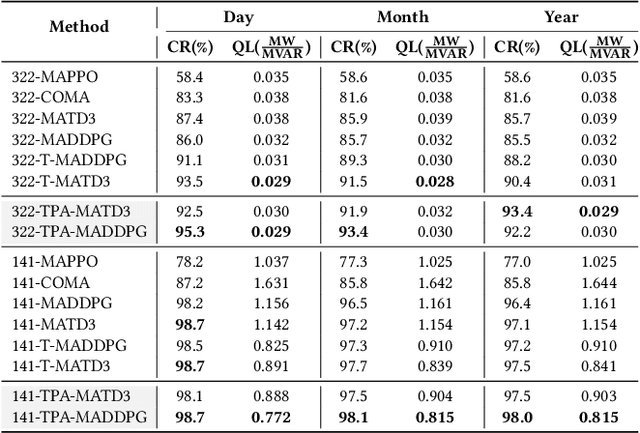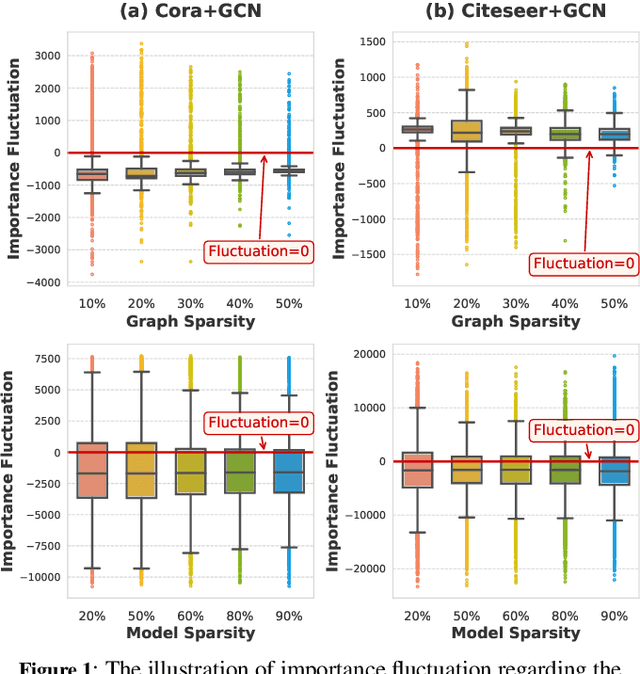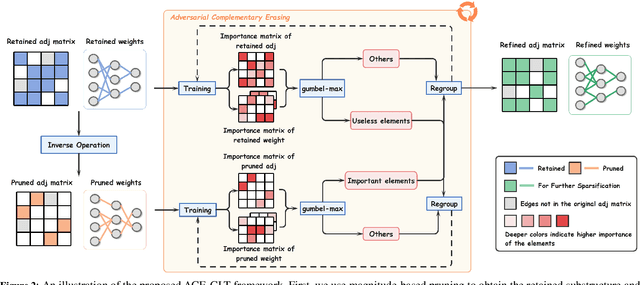Yuwen Wang
FAITH: A Framework for Assessing Intrinsic Tabular Hallucinations in finance
Aug 07, 2025Abstract:Hallucination remains a critical challenge for deploying Large Language Models (LLMs) in finance. Accurate extraction and precise calculation from tabular data are essential for reliable financial analysis, since even minor numerical errors can undermine decision-making and regulatory compliance. Financial applications have unique requirements, often relying on context-dependent, numerical, and proprietary tabular data that existing hallucination benchmarks rarely capture. In this study, we develop a rigorous and scalable framework for evaluating intrinsic hallucinations in financial LLMs, conceptualized as a context-aware masked span prediction task over real-world financial documents. Our main contributions are: (1) a novel, automated dataset creation paradigm using a masking strategy; (2) a new hallucination evaluation dataset derived from S&P 500 annual reports; and (3) a comprehensive evaluation of intrinsic hallucination patterns in state-of-the-art LLMs on financial tabular data. Our work provides a robust methodology for in-house LLM evaluation and serves as a critical step toward building more trustworthy and reliable financial Generative AI systems.
Nonparametric learning of heterogeneous graphical model on network-linked data
Jul 02, 2025Abstract:Graphical models have been popularly used for capturing conditional independence structure in multivariate data, which are often built upon independent and identically distributed observations, limiting their applicability to complex datasets such as network-linked data. This paper proposes a nonparametric graphical model that addresses these limitations by accommodating heterogeneous graph structures without imposing any specific distributional assumptions. The proposed estimation method effectively integrates network embedding with nonparametric graphical model estimation. It further transforms the graph learning task into solving a finite-dimensional linear equation system by leveraging the properties of vector-valued reproducing kernel Hilbert space. Moreover, theoretical guarantees are established for the proposed method in terms of the estimation consistency and exact recovery of the heterogeneous graph structures. Its effectiveness is also demonstrated through a variety of simulated examples and a real application to the statistician coauthorship dataset.
From GNNs to Trees: Multi-Granular Interpretability for Graph Neural Networks
May 01, 2025Abstract:Interpretable Graph Neural Networks (GNNs) aim to reveal the underlying reasoning behind model predictions, attributing their decisions to specific subgraphs that are informative. However, existing subgraph-based interpretable methods suffer from an overemphasis on local structure, potentially overlooking long-range dependencies within the entire graphs. Although recent efforts that rely on graph coarsening have proven beneficial for global interpretability, they inevitably reduce the graphs to a fixed granularity. Such an inflexible way can only capture graph connectivity at a specific level, whereas real-world graph tasks often exhibit relationships at varying granularities (e.g., relevant interactions in proteins span from functional groups, to amino acids, and up to protein domains). In this paper, we introduce a novel Tree-like Interpretable Framework (TIF) for graph classification, where plain GNNs are transformed into hierarchical trees, with each level featuring coarsened graphs of different granularity as tree nodes. Specifically, TIF iteratively adopts a graph coarsening module to compress original graphs (i.e., root nodes of trees) into increasingly coarser ones (i.e., child nodes of trees), while preserving diversity among tree nodes within different branches through a dedicated graph perturbation module. Finally, we propose an adaptive routing module to identify the most informative root-to-leaf paths, providing not only the final prediction but also the multi-granular interpretability for the decision-making process. Extensive experiments on the graph classification benchmarks with both synthetic and real-world datasets demonstrate the superiority of TIF in interpretability, while also delivering a competitive prediction performance akin to the state-of-the-art counterparts.
SPHERE: A Hierarchical Evaluation on Spatial Perception and Reasoning for Vision-Language Models
Dec 17, 2024Abstract:Current vision-language models may incorporate single-dimensional spatial cues, such as depth, object boundary, and basic spatial directions (e.g. left, right, front, back), yet often lack the multi-dimensional spatial reasoning necessary for human-like understanding and real-world applications. To address this gap, we develop SPHERE (Spatial Perception and Hierarchical Evaluation of REasoning), a hierarchical evaluation framework with a new human-annotated dataset to pinpoint model strengths and weaknesses, advancing from single-skill tasks to multi-skill tasks, and ultimately to complex reasoning tasks that require the integration of multiple spatial and visual cues with logical reasoning. Benchmark evaluation of state-of-the-art open-source models reveal significant shortcomings, especially in the abilities to understand distance and proximity, to reason from both allocentric and egocentric viewpoints, and to perform complex reasoning in a physical context. This work underscores the need for more advanced approaches to spatial understanding and reasoning, paving the way for improvements in vision-language models and their alignment with human-like spatial capabilities. The dataset will be open-sourced upon publication.
Unveiling Global Interactive Patterns across Graphs: Towards Interpretable Graph Neural Networks
Jul 02, 2024



Abstract:Graph Neural Networks (GNNs) have emerged as a prominent framework for graph mining, leading to significant advances across various domains. Stemmed from the node-wise representations of GNNs, existing explanation studies have embraced the subgraph-specific viewpoint that attributes the decision results to the salient features and local structures of nodes. However, graph-level tasks necessitate long-range dependencies and global interactions for advanced GNNs, deviating significantly from subgraph-specific explanations. To bridge this gap, this paper proposes a novel intrinsically interpretable scheme for graph classification, termed as Global Interactive Pattern (GIP) learning, which introduces learnable global interactive patterns to explicitly interpret decisions. GIP first tackles the complexity of interpretation by clustering numerous nodes using a constrained graph clustering module. Then, it matches the coarsened global interactive instance with a batch of self-interpretable graph prototypes, thereby facilitating a transparent graph-level reasoning process. Extensive experiments conducted on both synthetic and real-world benchmarks demonstrate that the proposed GIP yields significantly superior interpretability and competitive performance to~the state-of-the-art counterparts. Our code will be made publicly available.
Temporal Prototype-Aware Learning for Active Voltage Control on Power Distribution Networks
Jun 25, 2024



Abstract:Active Voltage Control (AVC) on the Power Distribution Networks (PDNs) aims to stabilize the voltage levels to ensure efficient and reliable operation of power systems. With the increasing integration of distributed energy resources, recent efforts have explored employing multi-agent reinforcement learning (MARL) techniques to realize effective AVC. Existing methods mainly focus on the acquisition of short-term AVC strategies, i.e., only learning AVC within the short-term training trajectories of a singular diurnal cycle. However, due to the dynamic nature of load demands and renewable energy, the operation states of real-world PDNs may exhibit significant distribution shifts across varying timescales (e.g., daily and seasonal changes). This can render those short-term strategies suboptimal or even obsolete when performing continuous AVC over extended periods. In this paper, we propose a novel temporal prototype-aware learning method, abbreviated as TPA, to learn time-adaptive AVC under short-term training trajectories. At the heart of TPA are two complementary components, namely multi-scale dynamic encoder and temporal prototype-aware policy, that can be readily incorporated into various MARL methods. The former component integrates a stacked transformer network to learn underlying temporal dependencies at different timescales of the PDNs, while the latter implements a learnable prototype matching mechanism to construct a dedicated AVC policy that can dynamically adapt to the evolving operation states. Experimental results on the AVC benchmark with different PDN sizes demonstrate that the proposed TPA surpasses the state-of-the-art counterparts not only in terms of control performance but also by offering model transferability. Our code is available at https://github.com/Canyizl/TPA-for-AVC.
Adversarial Erasing with Pruned Elements: Towards Better Graph Lottery Ticket
Aug 10, 2023



Abstract:Graph Lottery Ticket (GLT), a combination of core subgraph and sparse subnetwork, has been proposed to mitigate the computational cost of deep Graph Neural Networks (GNNs) on large input graphs while preserving original performance. However, the winning GLTs in exisiting studies are obtained by applying iterative magnitude-based pruning (IMP) without re-evaluating and re-considering the pruned information, which disregards the dynamic changes in the significance of edges/weights during graph/model structure pruning, and thus limits the appeal of the winning tickets. In this paper, we formulate a conjecture, i.e., existing overlooked valuable information in the pruned graph connections and model parameters which can be re-grouped into GLT to enhance the final performance. Specifically, we propose an adversarial complementary erasing (ACE) framework to explore the valuable information from the pruned components, thereby developing a more powerful GLT, referred to as the ACE-GLT. The main idea is to mine valuable information from pruned edges/weights after each round of IMP, and employ the ACE technique to refine the GLT processing. Finally, experimental results demonstrate that our ACE-GLT outperforms existing methods for searching GLT in diverse tasks. Our code will be made publicly available.
 Add to Chrome
Add to Chrome Add to Firefox
Add to Firefox Add to Edge
Add to Edge